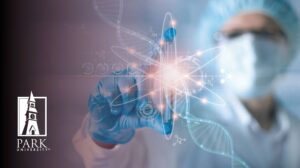
In the 21st century, biology is no longer just a science—it is a technology platform. The convergence of biotechnology and synthetic biology is transforming industries, from healthcare and agriculture to energy and manufacturing. These innovations are not only reshaping how we understand life but are enabling us to engineer it with unprecedented precision and purpose.
As global challenges such as climate change, food insecurity, and pandemics intensify, biotechnology and synthetic biology offer scalable, sustainable, and programmable solutions that could define the future of human progress.
Defining the Fields: Biotechnology vs. Synthetic Biology
Biotechnology broadly refers to the use of living organisms or biological systems to develop products and technologies that improve our lives. It includes genetic engineering, biopharmaceuticals, diagnostic tools, and bio-based materials.
Synthetic biology, a more recent evolution of biotech, goes a step further—treating biology like engineering. It involves designing and constructing new biological parts, devices, and systems, or reprogramming existing organisms to perform novel tasks. It is biology by design.
Major Breakthroughs Fueling the Revolution
1. CRISPR and Next-Gen Gene Editing
The discovery of CRISPR-Cas9 has revolutionized genetic engineering by offering a precise, affordable, and efficient way to edit DNA. Recent iterations like base editing and prime editing are even more refined, allowing targeted DNA changes without cutting the genome.
Use Case: Developing gene therapies for inherited diseases like sickle cell anemia and Duchenne muscular dystrophy.
2. mRNA and Programmable Medicines
mRNA technology, spotlighted during the COVID-19 pandemic, has far-reaching potential beyond vaccines. It enables programmable, on-demand medicines for cancer immunotherapy, rare diseases, and even autoimmune conditions.
Use Case: Moderna and BioNTech are expanding mRNA pipelines to target flu, RSV, and personalized oncology.
3. Biomanufacturing and Biofoundries
Synthetic biology enables living cells to produce valuable chemicals, enzymes, and materials more sustainably than traditional petrochemical methods.
Use Case: Companies like Ginkgo Bioworks and Zymergen are engineering microbes to manufacture fragrances, food ingredients, and biodegradable plastics.
4. DNA Data Storage and Living Sensors
With data demands surging, DNA-based storage is being explored as a low-energy, high-density alternative to silicon chips. Synthetic cells are also being programmed as biosensors that detect pathogens, toxins, or changes in the environment.
Use Case: Environmental biosensors for oil spills or water contamination; DNA archives that can last for thousands of years.
Transformative Industry Applications
Healthcare and Precision Medicine
Cell and gene therapies offer potentially curative treatments for chronic and rare diseases.
Personalized medicine leverages genetic profiles to tailor drugs to individual patients.
Synthetic probiotics are being developed to regulate the gut microbiome and treat conditions like obesity and depression.
Agriculture and Food Security
Genetically modified crops with enhanced drought resistance, yield, and nutritional content are already in fields.
Lab-grown meat and microbial fermentation are reducing the environmental impact of food production.
Bioengineered microbes are being used to develop natural pesticides and nitrogen-fixing bacteria that reduce fertilizer use.
Energy and Climate Solutions
Engineered algae and bacteria can produce biofuels and biodegradable materials.
Synthetic biology enables carbon capture organisms that absorb CO₂ and convert it into useful substances.
Bio-based alternatives to concrete, plastics, and textiles are emerging from labs to combat environmental degradation
Challenges and Ethical Considerations
Despite its promise, biotechnology and synthetic biology raise complex questions:
Bioethics: How do we ensure safe and responsible manipulation of life?
Regulation: Frameworks are evolving but must keep pace with innovation.
Biosecurity: Dual-use risks require vigilance to prevent misuse or unintended consequences.
Public trust: Transparency, education, and equitable access are essential to societal acceptance.
The Business and Investment Landscape
Venture capital and government funding in biotech and synbio are surging. From pharma giants to agile startups, the ecosystem is buzzing with innovation:
SynBioBeta and IndieBio are nurturing early-stage companies.
DARPA and the European Commission are funding synthetic biology research for strategic resilience.
ESG-conscious investors are backing bio-based sustainability ventures as part of climate-aligned portfolios.
Conclusion: A Bio-Intelligent Future
We are on the cusp of a biological revolution where cells can be coded like software, and nature can be engineered to heal, feed, and fuel the world. The fusion of biotechnology and synthetic biology is not just about solving today’s problems—it’s about reimagining what’s possible for tomorrow.
For leaders and innovators, the message is clear: biology is no longer just life—it’s infrastructure. Inve
sting in biotech now means investing in a more resilient, sustainable, and healthier future.
